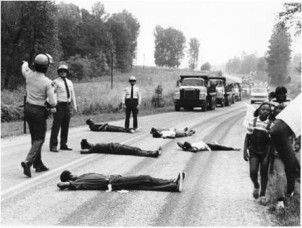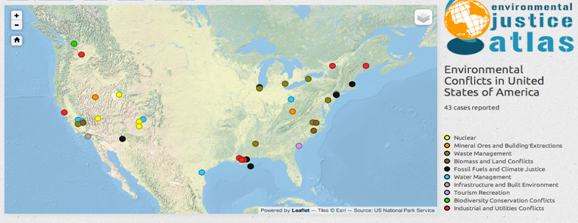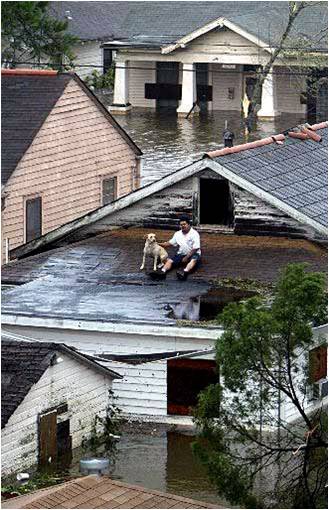
The 40 most influential environmental justice conflicts in recent American history are now included in our Global Atlas of Environmental Justice. The U.S. cases were compiled by the University of Michigan’s School of Natural Resources and Environment.
In the United States, decades of research have documented a strong correlation between the location of environmental burdens and the racial/ethnic background of the most impacted residents. In an effort to choose landmark cases in the U.S. the team from University of Michigan elicited feedback from more than 200 environmental justice leaders, activists, and scholars in identifying these case studies. “We felt that we could not identify influential cases without incorporating the voices of the activists and leaders who have worked within the field for more than three decades” says Alejandro Colsa-Perez, a Fulbright scholar from Spain and one of the four students from the team that recently graduated from the University of Michigan while doing the research on the top forty environmental justice cases.
Fossil fuels and climate justice conflicts; industrial conflicts and waste management conflicts dominate the list of most influential environmental justice conflicts, with seven cases each. The list includes historical cases within the environmental justice movement, such as 1978 Love Canal, New York, and the 1982 Warren County, North Carolina, protests. With the inclusion of tragedies like Hurricane Sandy and Hurricane Katrina (pictured below), it is becoming clear that climate change threats are also disproportionately impacting the same communities that have suffered historically from environmental racism. The forty cases identified by participants in the survey represent a wide range of time periods, geographic regions, communities, and environmental challenges.
Although some of the cases have a clear ending point, many of these conflicts are ongoing and unresolved. An element of hope arises when looking at the percentage of conflicts where EJOLT collaborators believe environmental justice has been served, based on the way the conflict was resolved or on the improvements that impacted communities have achieved in their fight against injustices (e.g. the existence of compensation to communities, court cases in favor of environmental justice communities, rehabilitation/restoration of the area, or strengthening of participation in decision-making). As judged by the EJOLT team, in the U.S. approximately 35% have experienced some form of environmental justice success, compared to an average of 17% worldwide. “The long history of environmental justice activism in the United States can provide an important guide for activists and researchers across the Globe to learn about strategies that vulnerable communities have used in the past to help improve conditions within their communities”, says Professor Paul Mohai from the School of Natural Resources and Environment at the University of Michigan.
The Global Atlas already has over 1100 stories about communities struggling for environmental justice. It serves as a virtual space for those working on environmental justice issues to get information, find other groups working on related issues, and increase the visibility of environmental conflicts. According to Atlas coordinator Leah Temper from the Autonomous University of Barcelona “only once communities stand up and say we will no longer be polluted, will governments and companies change their behaviour”.
For more information please contact
Paul Mohai, 734-763-4598, email hidden; JavaScript is required




